Label Radar Scan for AI Model Training: Difference between revisions
Created page with "== Background == === Basic Procedure of Uploading Radar Scans === After pest controller John has done a radar scan using iTraker and its companion mobile app, John could either save the scan as a JPEG image to the mobile's local photo library, or upload to Termatrac Online (ttonline) as the scans of a job. iTraker records only last up to 10 seconds of a radar scan. To upload a scan: # Scan # Click [Save]. The screen navigates to a snapshot of the scan. # Click [Add..." |
|||
| (4 intermediate revisions by the same user not shown) | |||
| Line 2: | Line 2: | ||
=== Basic Procedure of Uploading Radar Scans === | === Basic Procedure of Uploading Radar Scans === | ||
After pest controller John | After pest controller John completes a radar scan using the iTraker device and its companion mobile app, he has two options for saving the scan: | ||
* Save it as a JPEG image to the mobile device’s photo library | |||
* Upload it to Termatrac Online (TTOnline) as part of a job record | |||
'''Note:''' iTraker captures radar scan data for a maximum duration of 10 seconds. | |||
Steps to Upload a Scan to TTOnline: | |||
# '''Perform the scan''' | |||
# Tap '''[Save]''' — this navigates to a snapshot of the scan | |||
# Tap '''[Add Scan to Job]''' | |||
# Choose to either: | |||
#* Use the current job and tap '''[Save]''', or | |||
#* Create a new job and save the scan to it | |||
# After saving additional scans to the same job, return to '''Home''' | |||
# Locate the current job under '''Jobs''' | |||
# Tap '''[Upload]''' to send the scans to TTOnline | |||
=== The Legacy And the Future === | |||
"Radar Scan saved in photo library of mobile" and "Saved Radar Scan in Legacy TTOnline" are of the legacy.[[File:RadarSavedInApp.jpg|center|thumb|Radar Scan saved in photo library of mobile]] | |||
[[File:SavedRadarInTtOnline.png|center|thumb|Saved Radar Scan in Legacy TTOnline]] | |||
[[File:PlotRadarInTtPortal.png|center|thumb|Plotted Radar Scan in TT Portal]] | |||
== Label Radar Scans == | |||
'''Before training the AI model''', a labeling technician—typically a domain expert such as a pest controller—will review and tag radar scans. Scans that clearly exhibit the characteristic "elephant walk" pattern of termite activity are marked as "Exist" accordingly, while others may be labeled as "Absent" meaning irrelevant or uncertain. For effective model training, it's important that '''over 80% of the input data''' reflects confirmed termite movement. | |||
[[File:Labeling data.png|center|thumb|AI labeling]] | |||
To accelerate the labeling process, you can generate multiple radar scans that clearly indicate termite presence, assign them to a single job, and upload them in bulk. | |||
The '''TT Portal UI''' supports both '''individual scan labeling''' and '''batch tagging''', making it easier to label large volumes of data efficiently. | |||
=== Radar Scans of Unit === | |||
[[File:RadarScansOfUnit.png|thumb|Radar Scans of Unit]] | |||
The scans are listed in descending order by upload date and time. | |||
==== Label One by One ==== | |||
The question mark represents you haven't touch the record of the scan. | |||
[[File:TermiteWalkDropdown.png|center|thumb|Label current scan]] | |||
==== Batch Labeling ==== | |||
[[File:Batch tagging.png|thumb|Batch labeling]]After selecting multiple scans, mark them "Exist" or "Absent". | |||
=== Radar Scans of Company === | |||
You can also view all scans of a company, collected by multiple iTraker units. | |||
=== Labeling Strategy for Efficiency === | |||
While you can label scans one by one, batch processing may reduce the overhead through selecting multiple scans that represent elephant walk. | |||
==== Ad-hoc Labeling of Arbitrary Scans ==== | |||
Walkthrough a list of scans, select those representing elephant walk and skip the others, then "Update selected to Exist". | |||
==== Mass labeling of Scans ==== | |||
John the pest controller has done 100 scans timestamped between 2025-10-13T15:30+10 ~ 2525-11-23T11:23+10, and all scans are representing elephant walk. John may do the labeling, or just tell Alice, the labeling technician about the time range and the serial of iTraker. Then Alice may just locate and select those scans, and "Update selected to Exist". | |||
Latest revision as of 01:58, 19 September 2025
Background
Basic Procedure of Uploading Radar Scans
After pest controller John completes a radar scan using the iTraker device and its companion mobile app, he has two options for saving the scan:
- Save it as a JPEG image to the mobile device’s photo library
- Upload it to Termatrac Online (TTOnline) as part of a job record
Note: iTraker captures radar scan data for a maximum duration of 10 seconds.
Steps to Upload a Scan to TTOnline:
- Perform the scan
- Tap [Save] — this navigates to a snapshot of the scan
- Tap [Add Scan to Job]
- Choose to either:
- Use the current job and tap [Save], or
- Create a new job and save the scan to it
- After saving additional scans to the same job, return to Home
- Locate the current job under Jobs
- Tap [Upload] to send the scans to TTOnline
The Legacy And the Future
"Radar Scan saved in photo library of mobile" and "Saved Radar Scan in Legacy TTOnline" are of the legacy.
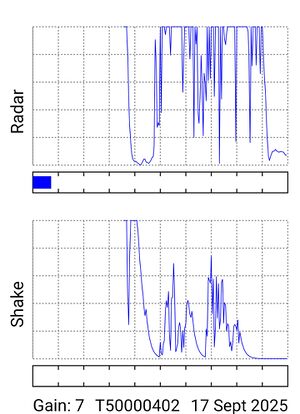
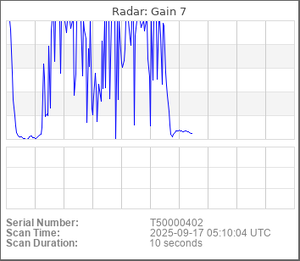

Label Radar Scans
Before training the AI model, a labeling technician—typically a domain expert such as a pest controller—will review and tag radar scans. Scans that clearly exhibit the characteristic "elephant walk" pattern of termite activity are marked as "Exist" accordingly, while others may be labeled as "Absent" meaning irrelevant or uncertain. For effective model training, it's important that over 80% of the input data reflects confirmed termite movement.
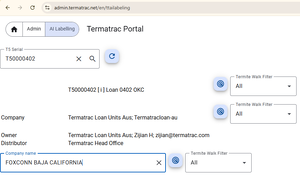
To accelerate the labeling process, you can generate multiple radar scans that clearly indicate termite presence, assign them to a single job, and upload them in bulk.
The TT Portal UI supports both individual scan labeling and batch tagging, making it easier to label large volumes of data efficiently.
Radar Scans of Unit
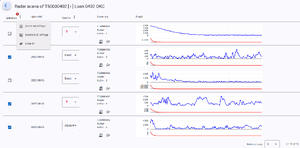
The scans are listed in descending order by upload date and time.
Label One by One
The question mark represents you haven't touch the record of the scan.
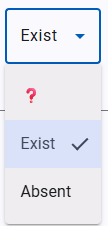
Batch Labeling

After selecting multiple scans, mark them "Exist" or "Absent".
Radar Scans of Company
You can also view all scans of a company, collected by multiple iTraker units.
Labeling Strategy for Efficiency
While you can label scans one by one, batch processing may reduce the overhead through selecting multiple scans that represent elephant walk.
Ad-hoc Labeling of Arbitrary Scans
Walkthrough a list of scans, select those representing elephant walk and skip the others, then "Update selected to Exist".
Mass labeling of Scans
John the pest controller has done 100 scans timestamped between 2025-10-13T15:30+10 ~ 2525-11-23T11:23+10, and all scans are representing elephant walk. John may do the labeling, or just tell Alice, the labeling technician about the time range and the serial of iTraker. Then Alice may just locate and select those scans, and "Update selected to Exist".